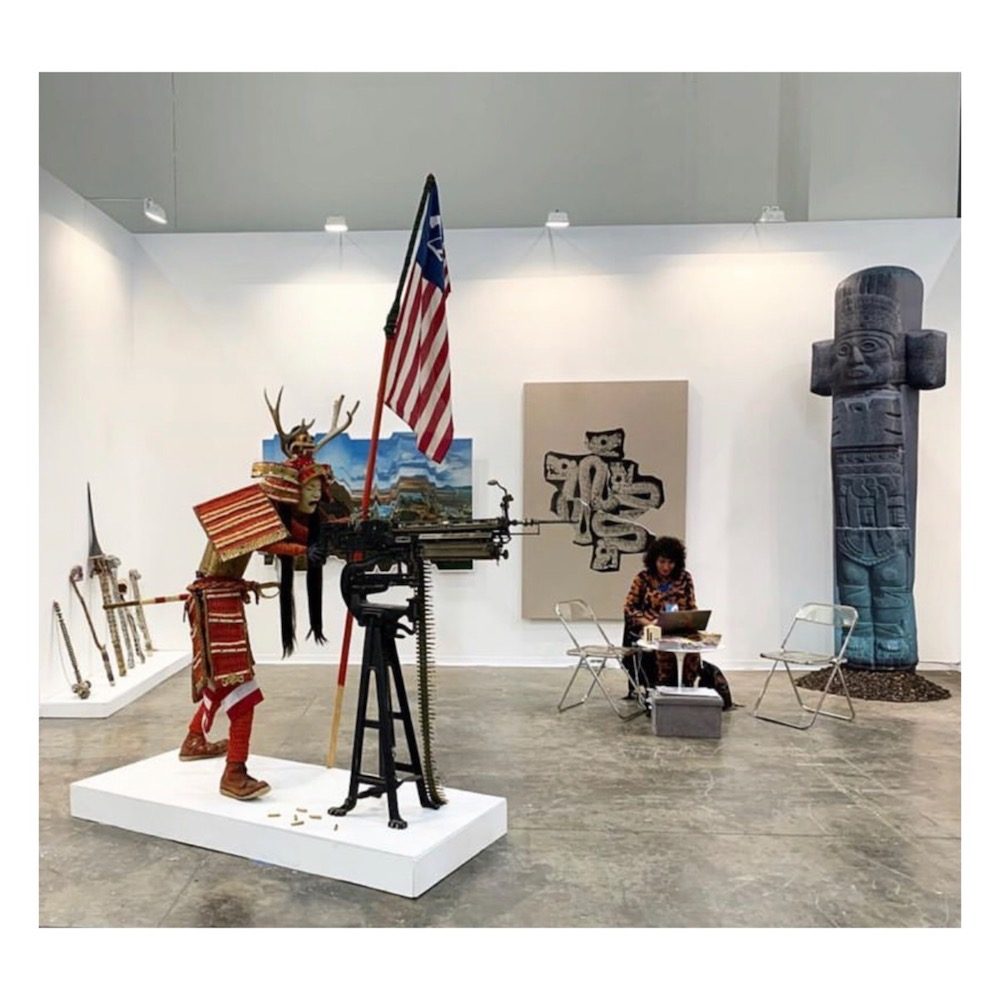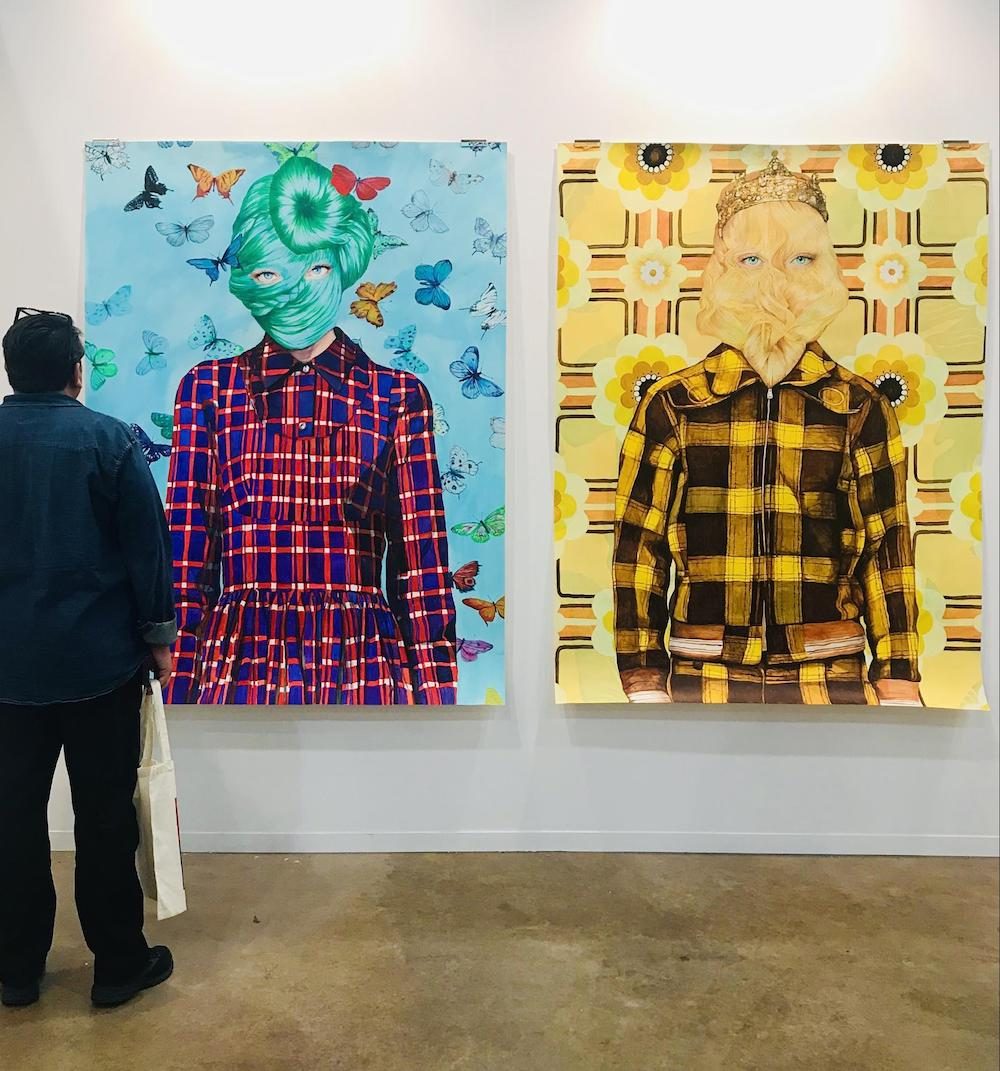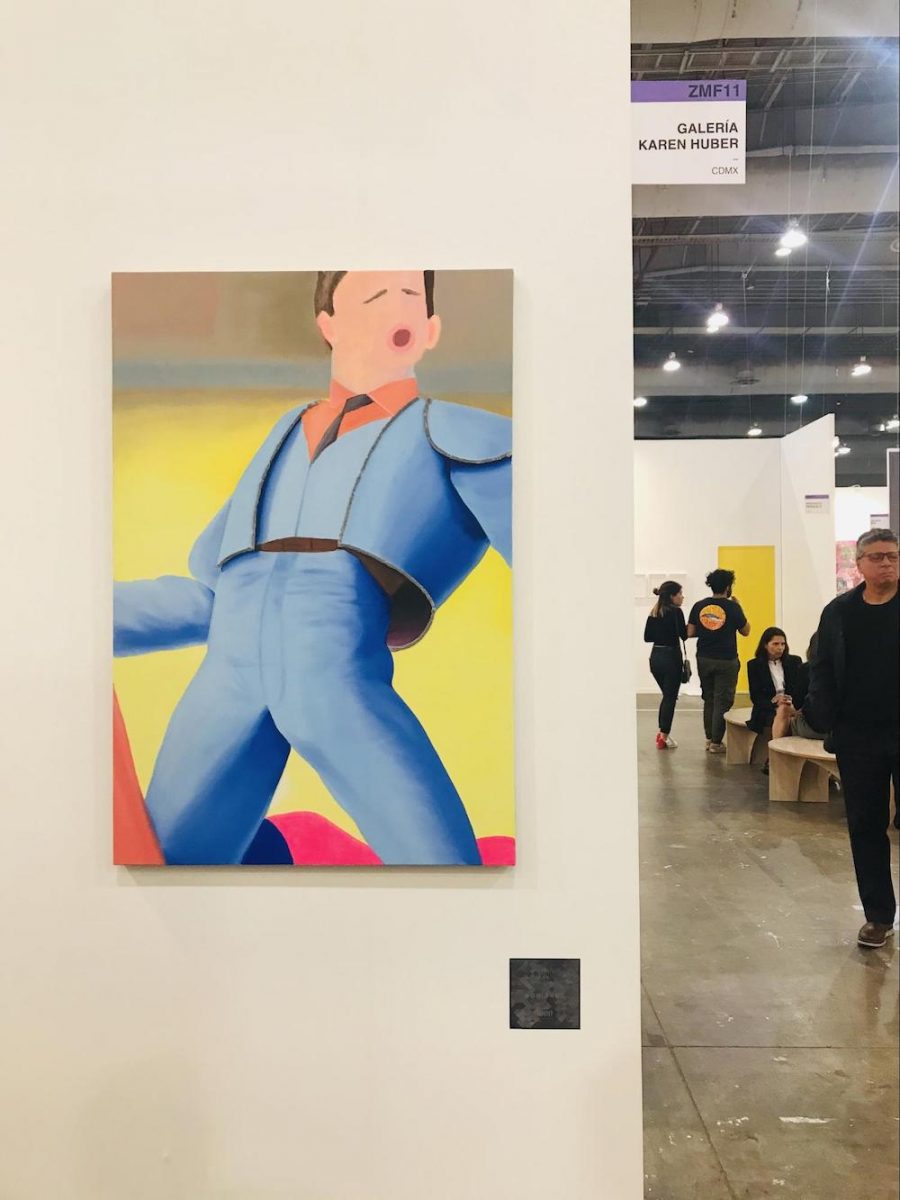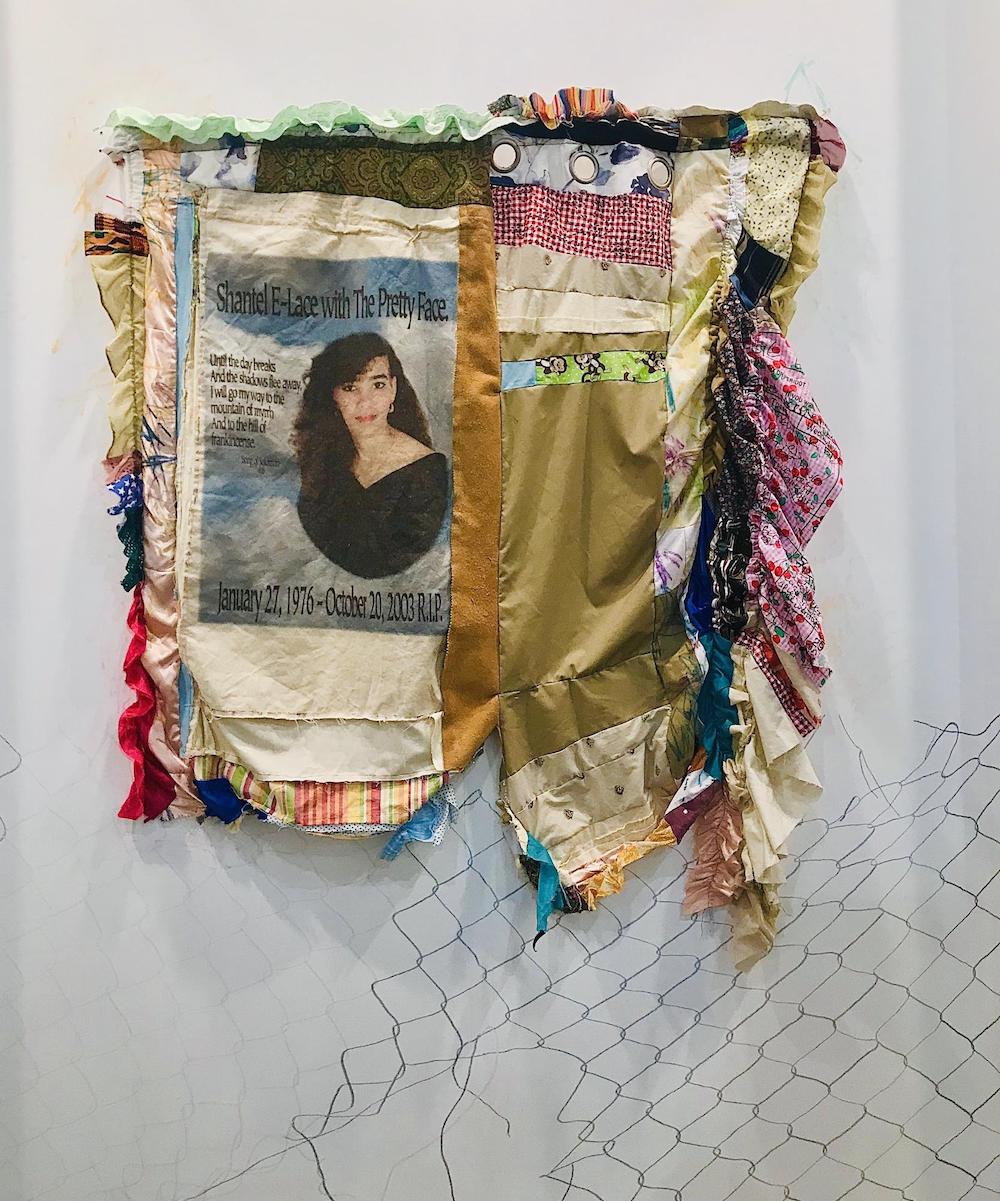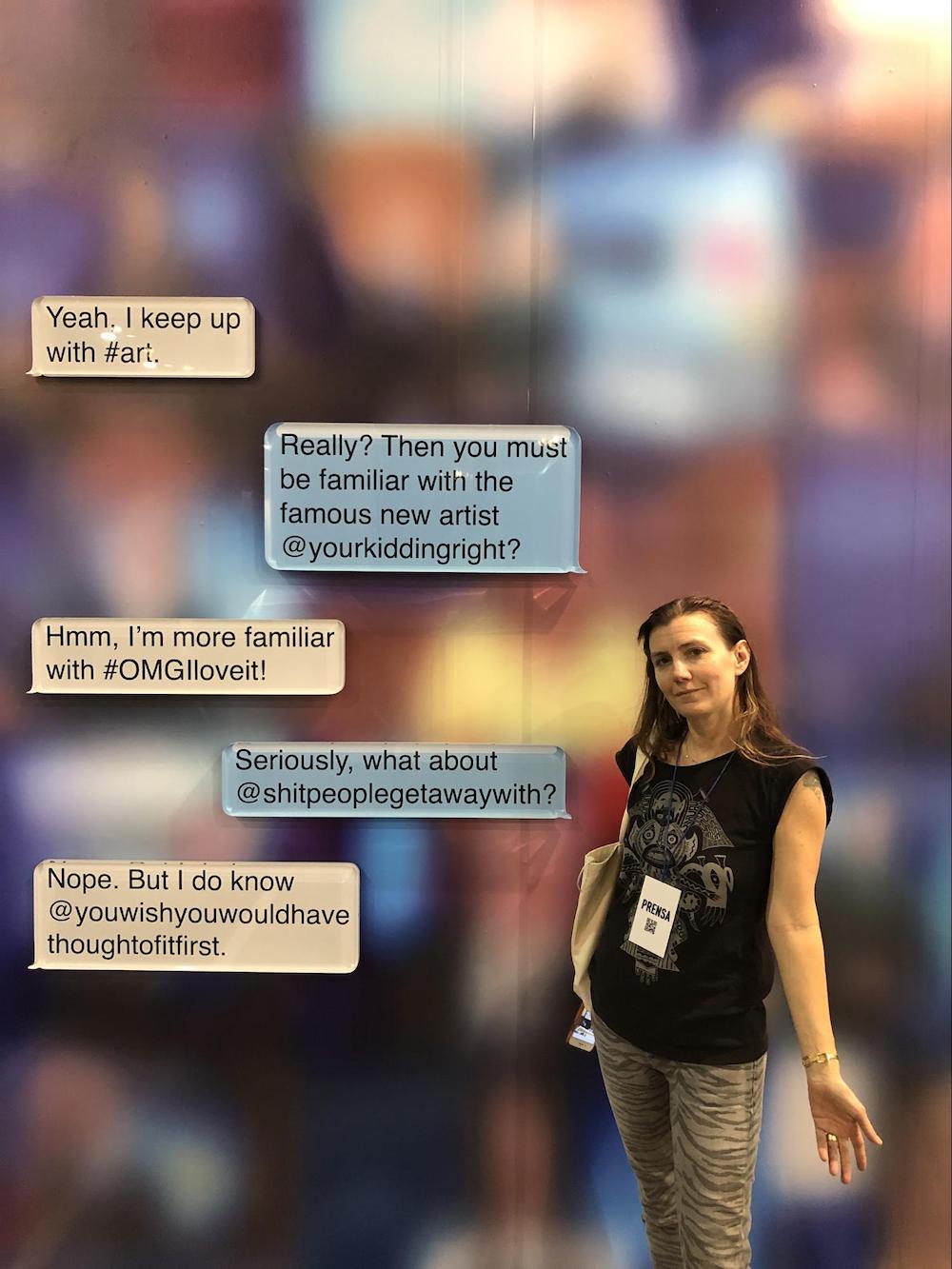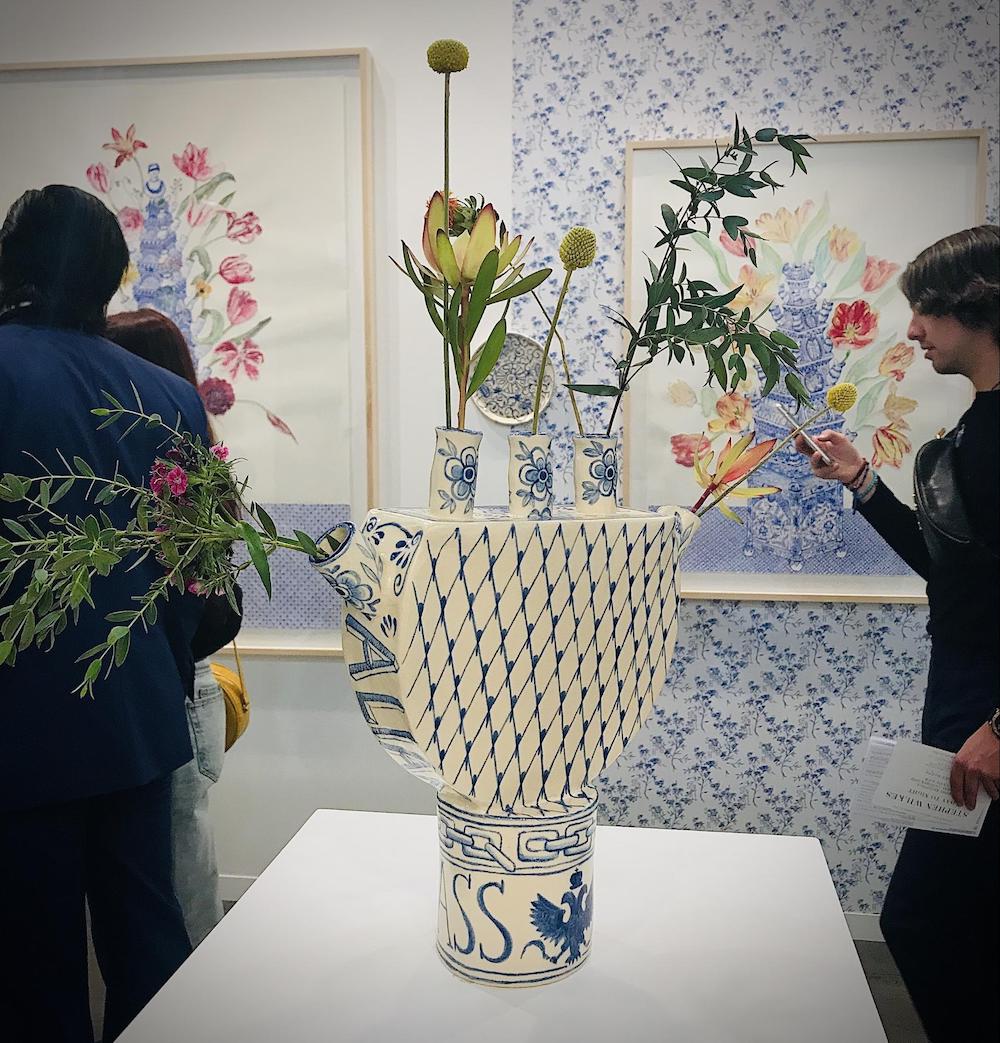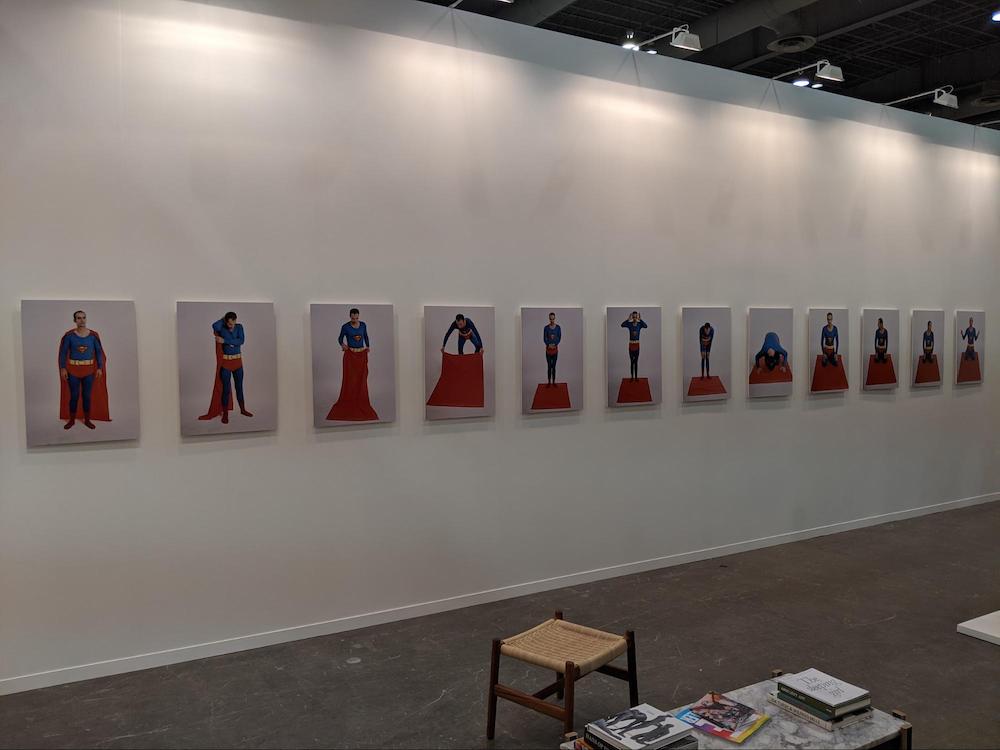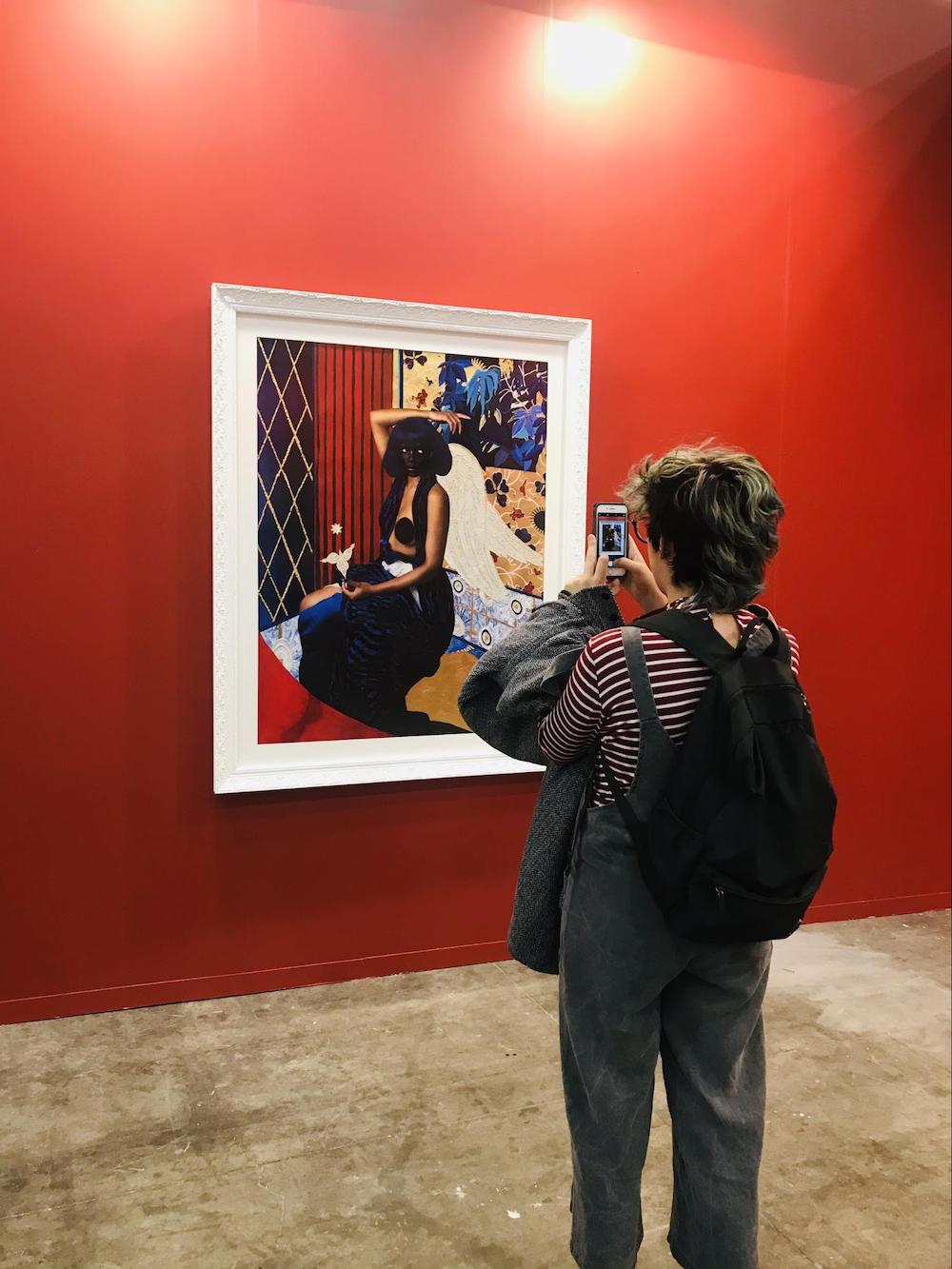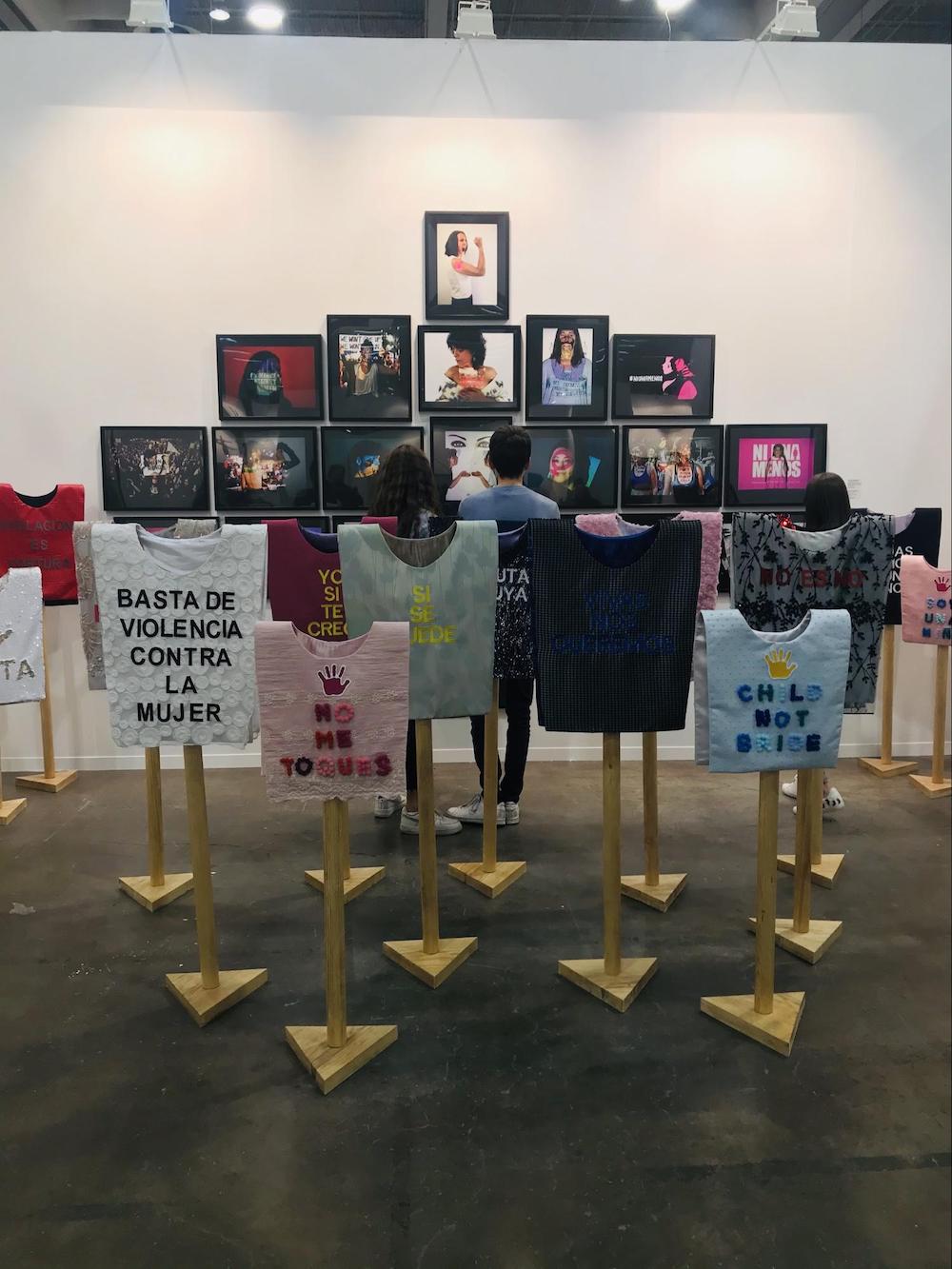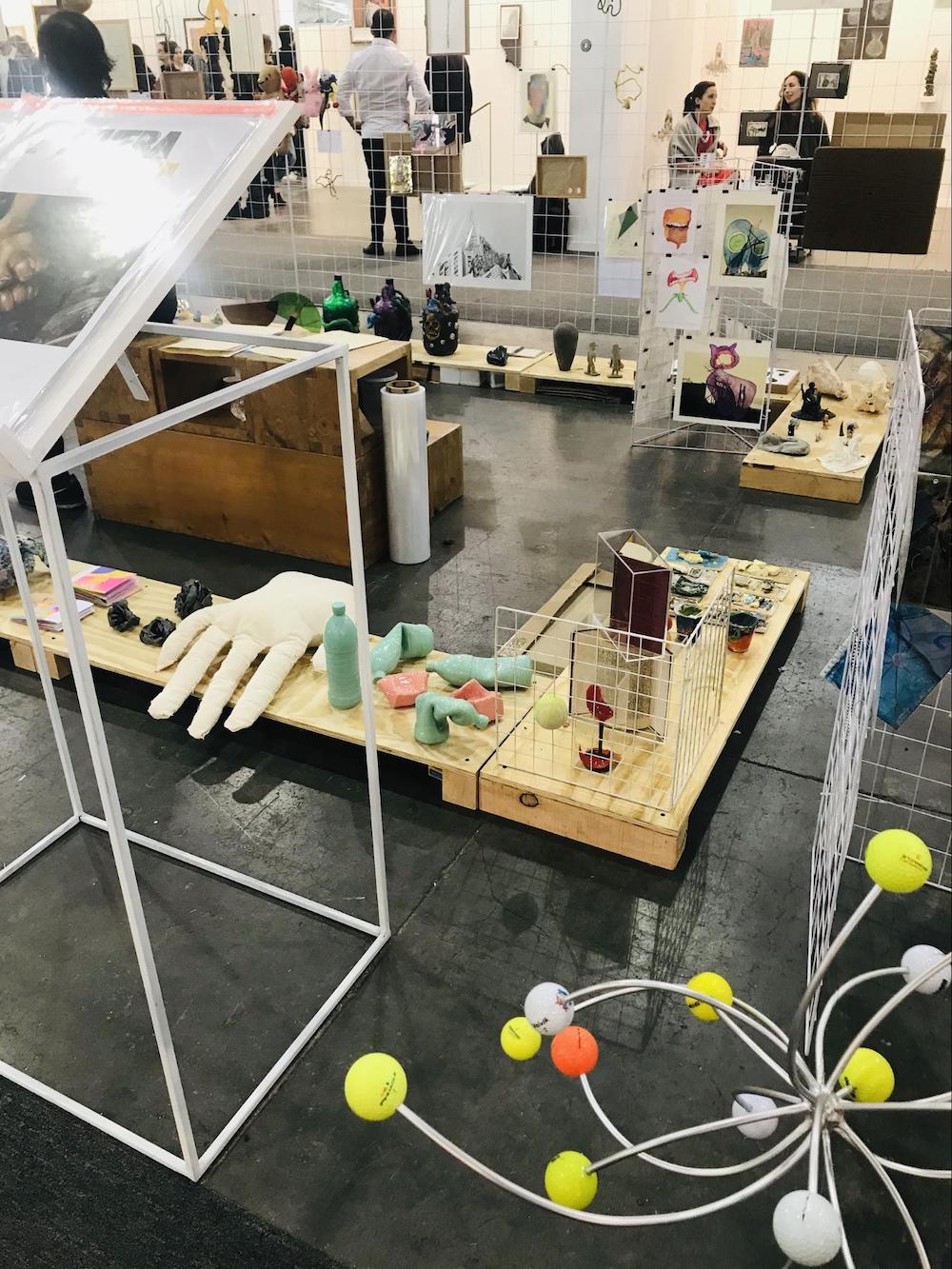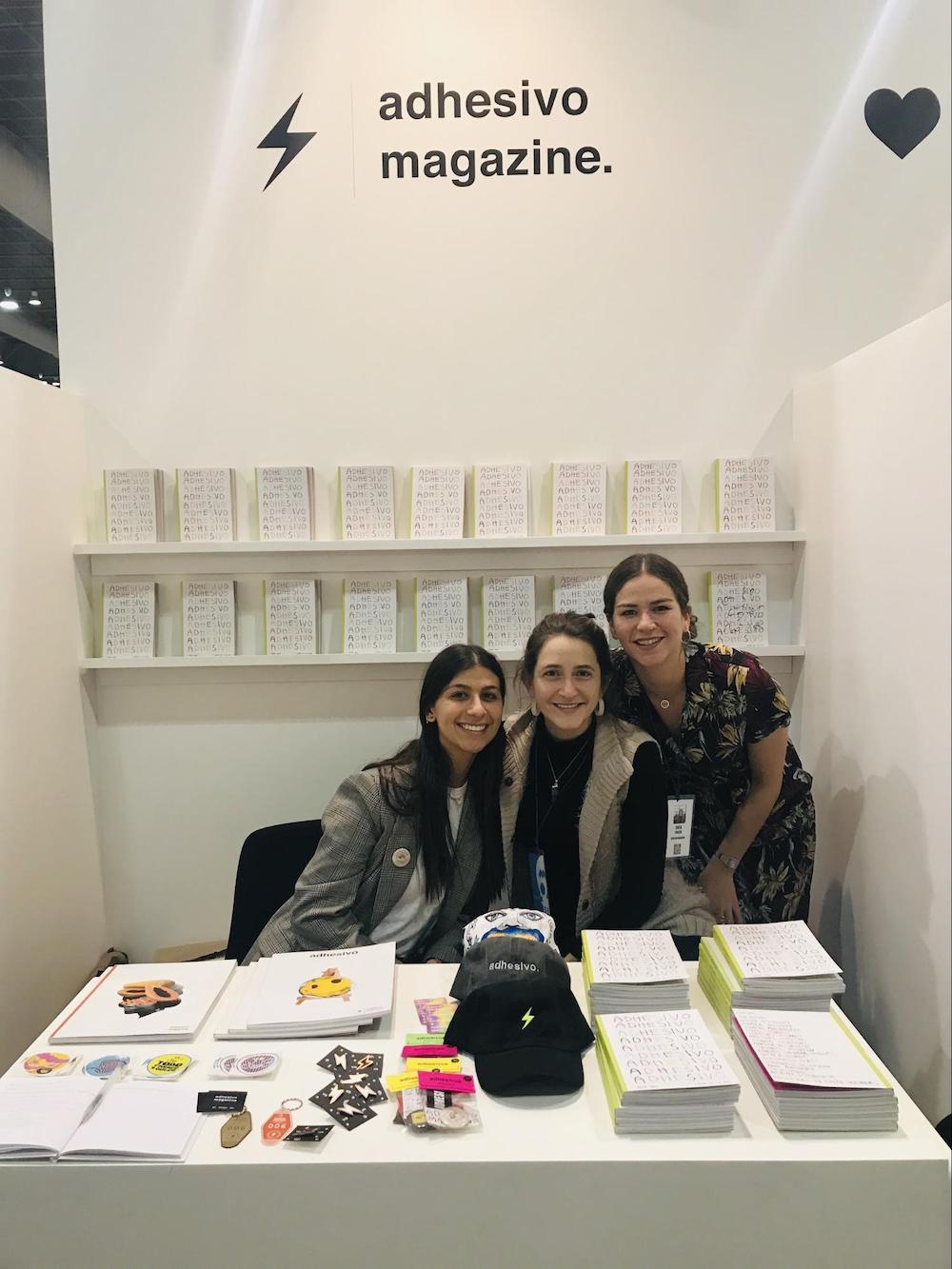Cara: It’s easy to have good taste when you’re surrounded by artists with established names and mega-galleries playing the scarcity game. However, it’s much more challenging (and exciting) to scout out new talent, especially from another country or continent, without those arbitrary blue-chip boundary lines already drawn. In general, I prefer fairs with a high level of professionalism that feel stringently vetted, but with fewer big name artists and galleries. Zona Maco is Latin America’s largest art fair and, like Basel, is hosted in a giant convention center with a similar sales-oriented aesthetic. Temporary white booth walls divide up the giant space into a maze of viewing areas, where some feel like a curated gallery while other displays are cursory and transactional at best.
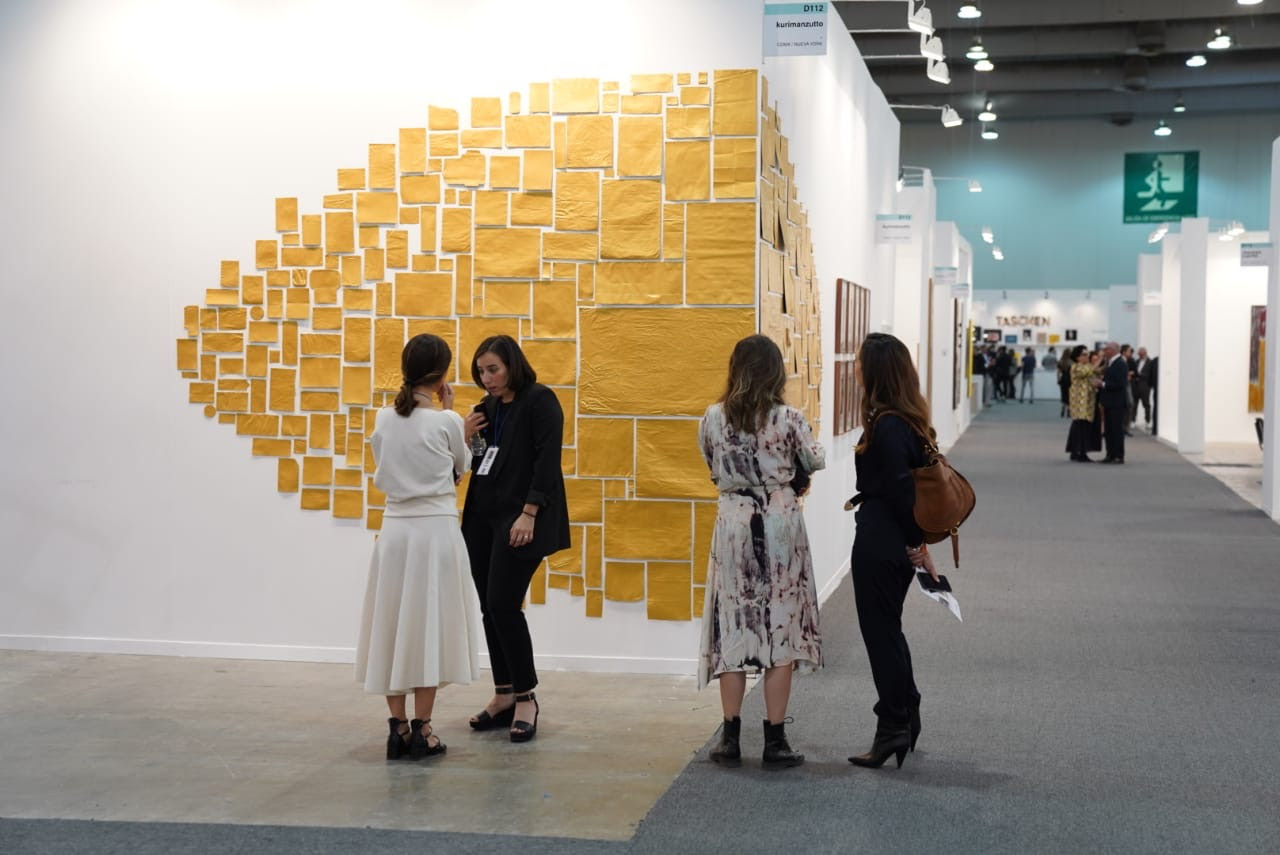
Despite seeing fewer big names and established global galleries, I didn’t feel like I was seeing any less-accomplished or lower-quality work. A majority of works available come from contemporary galleries, as well as a solid secondary market section filled mostly with modern art, along with smaller curated projects that feel more experimental and ambitious. Unlike Basel, over half of the galleries at Zona Maco are from Mexico and Latin America, and offer a cultivated roster of museum-caliber artists and an engagement with traditional materials, radical politics, and Latinx-centric themes.
At Art Basel you know the names of every single artist there, but Maco boasted ample space for discovery. An aspiring curator from anywhere in the world could come away with a diverse, challenging, and exciting list of new prospects to work with and collect, especially in an age where expanding the cannon to include multicultural voices is a growing concern.
Michael: It’s been an uncharacteristically dramatic year for Zona Maco. On opening day, there were still some bare walls owing to artwork being held up at customs. The fair closed on a much more scandalous note: The divisive art critic Avelina Lesper “accidentally” destroyed one of Gabriel Rico’s inexplicably popular sculptures comprised of a pane of glass leaning against stuff in Galería OMR’s booth on Saturday.
She apparently tried to add a soda can to the composition for a photograph, arguing that it’s basically just interchangeable trash. Ironically, her gesture kinda proved the conceit of Rico’s work: that there’s some skill and thought involved in striking the balance necessary to maintain his precarious works intact. Whether or not the world is a better or more thoughtful place because these fragile works remain complete is another conversation.
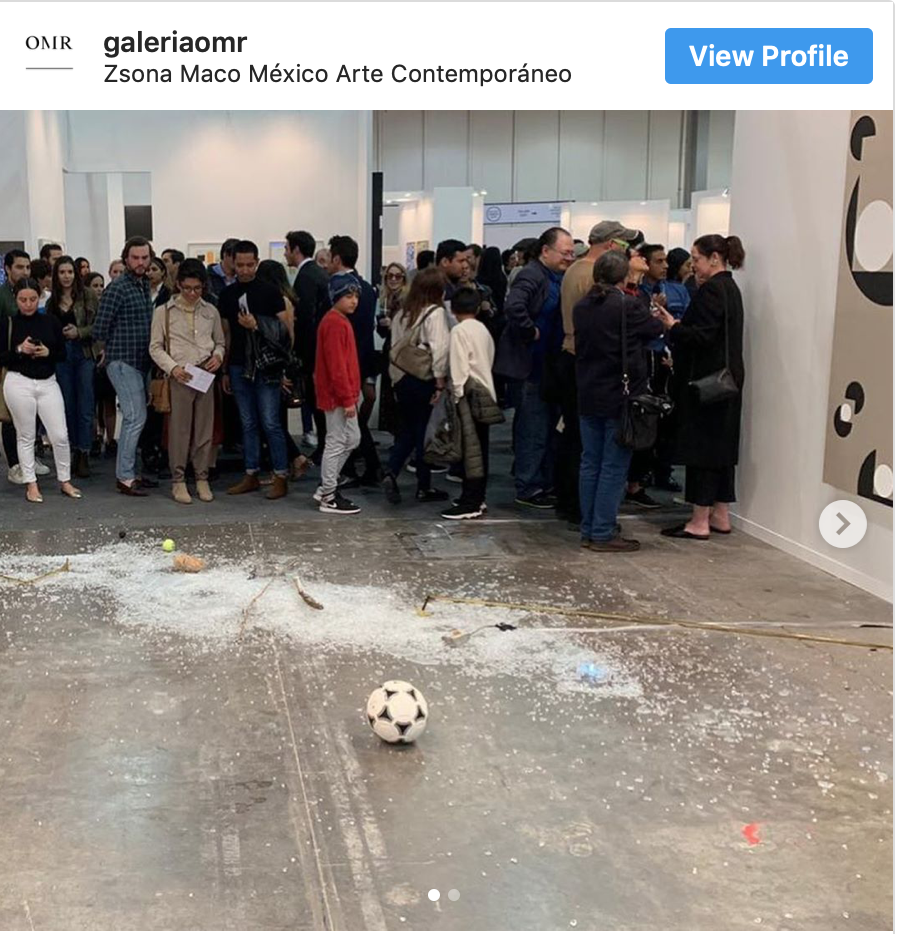
Cara: To provide some basic background information, Zona Maco was founded in 2002 and the event located at Centro Citibanamex in Mexico City includes four sections: Arte Contemporáneo features Mexican and international galleries; Design (established in 2011) exhibits furniture, jewelry, textiles, limited editions, and decorative objects (like a live Louis Vuitton painting performance space that was packed with people watching the painter in person and on screens); Salon (est. 2014) features antiques; and Foto (2015) includes vintage, modern, and contemporary photography.
But all the news coming out from Maco centers around that broken sculpture, the art critic’s reaction to it, with the story repeated in close to 20 different national art publications, all parroting the same information in a headline grab, substituting social media for journalism. None of them addressed the artist, who had been recently included in the Venice Biennale, or his work, which tends to be a precarious combination of banal found objects, their arrangement functioning as the “art” without the artist fabricating anything.
Michael: I personally don’t care for Rico’s sculpture, and find their recent ubiquity on the Mexican art scene tiring. He was one of the artists from OMR’s roster in their upstairs brick-and-mortar group show that I recommended skipping because it just looked like every boring booth I’ve ever strolled by at an art fair.
Cara: I did not love everything I saw and mostly skipped over the secondary market section, but I was impressed by this fair as a whole. They included colorful price stickers on the walls next to certain more “affordable” works, which you would never see in Basel, and I found it refreshing to see decorative works next to furniture and clothing in the design section, as well as juicy abstract paintings that had a mostly NADA-esque sensibility and the attention-grabbing sculptural works that attract selfies and buzzing crowds. I was excited to see a few NY galleries who had previously participated at UNTITLED Miami and some familiar artists, like Baltimore-based Jerrell Gibbs.
Michael: Apart from the two big moments of intrigue, I wasn’t really wowed by this year’s iteration of the fair. I can’t tell if part of this has to do with the layout—it always feels like the boring secondary market section and branded advertising booths have consumed more and more of the fair’s footprint, like the slow creep of suburbs replacing fertile fields. That’s an impression that’s not helped by the fair’s pushy security/crowd control strategies. There were times I was standing literally three meters from the exit but was herded the equivalent of a small city block out of my way so that I was forced to “exit through the gift shop” like a bad, decade-late Banksy reference.

Cara: But what about the beautiful men pushing carts of mezcal shots? And I kinda loved that Smart Water was a sponsor, giving out giant bottles of water and cute tote bags. For me, the publications section was one of the highlights, with small booths from all over the world and international publications like Artforum and Architectural Digest next to smaller, Mexican-based art publications like adhesivo and Hotbook.
Michael: In the past I’ve noted that it can sometimes be a hard sell in a week of more convenient and “exciting” art-viewing opportunities, but I made a point of recommending the fair to visitors. Maco remains a very worthwhile fair for artists, collectors, and gallerists (I’ve heard sales were great, and at least one gallery is getting a big ol’ insurance claim windfall). As a viewer, I love that this fair’s exhibitors are more and more dissolving the arbitrary distinctions between “craft,” “fine art,” and “design.” The fair’s curators and organizers could actually take a cue from the best dealers and gallerists and blur those categories further in terms of layout and branding.
Cara: I agree completely and found the blurring of boundaries between media and genres to be exciting. They felt intentional, rather than like a byproduct of economics or efficiency. I think that Maco is an excellent fair for scouting out new international talent, expanding one’s collection with up-and-coming global names. For those who want to discover and foster talent, especially through a number of impressive galleries based in CDMX, I think Maco should be on your list.
The following are some highlights from Maco, but in no particular order.
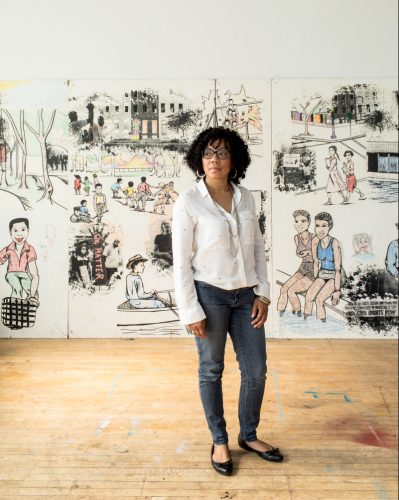
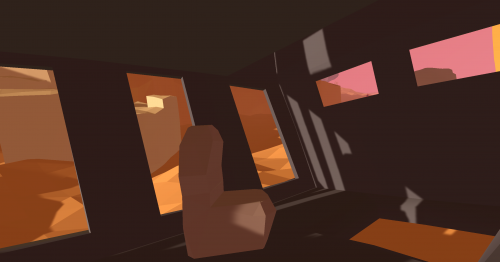
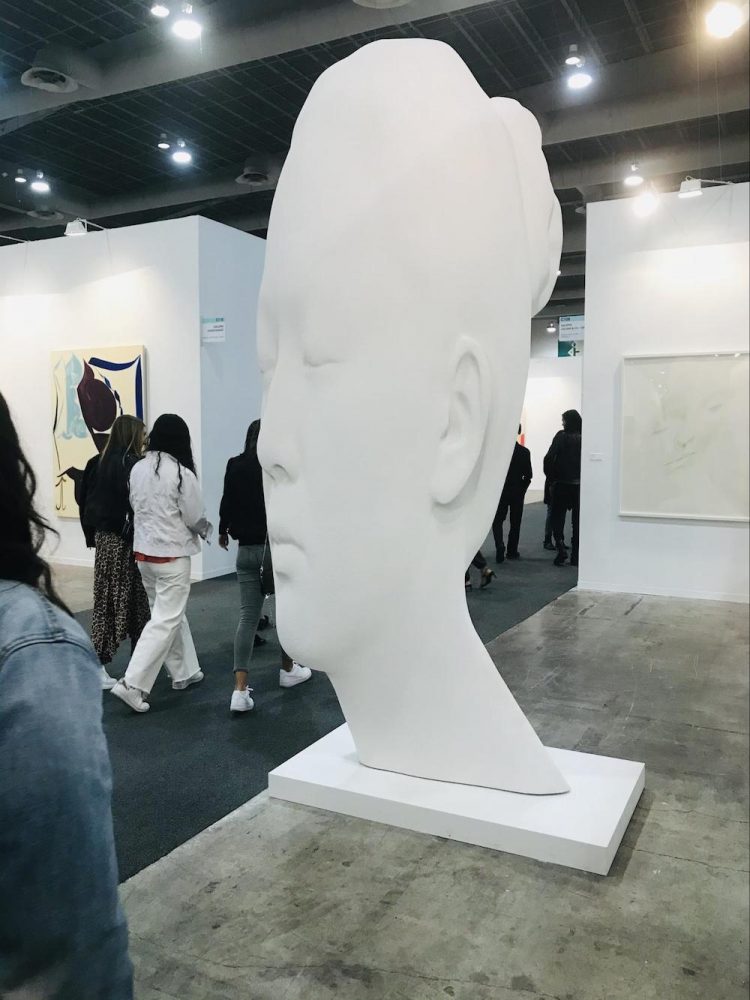
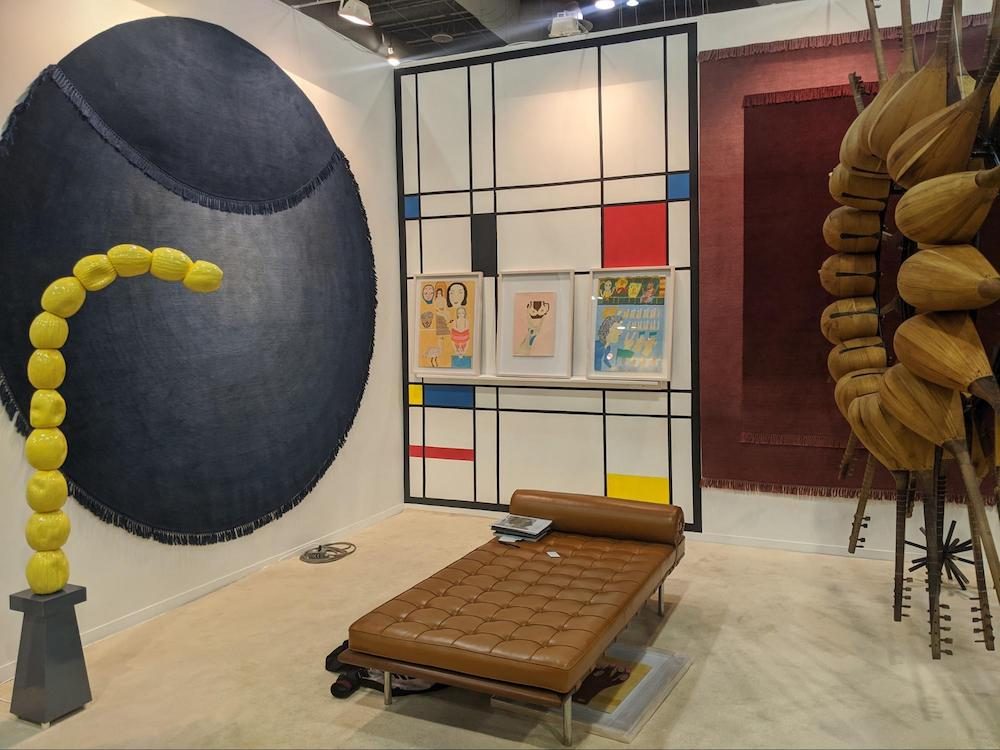
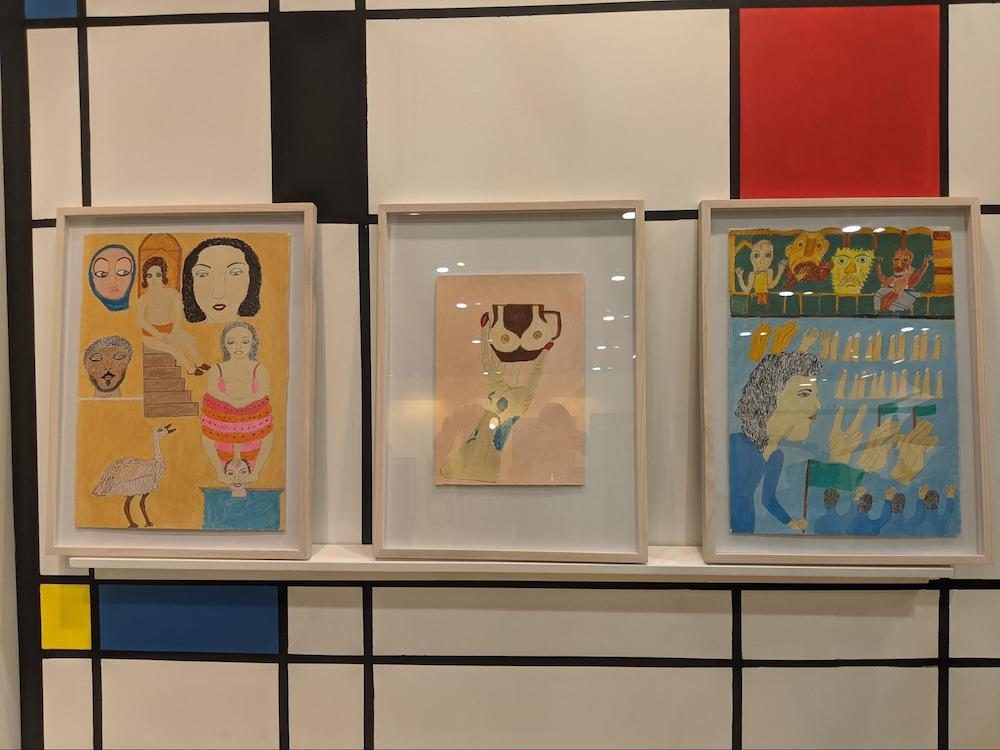
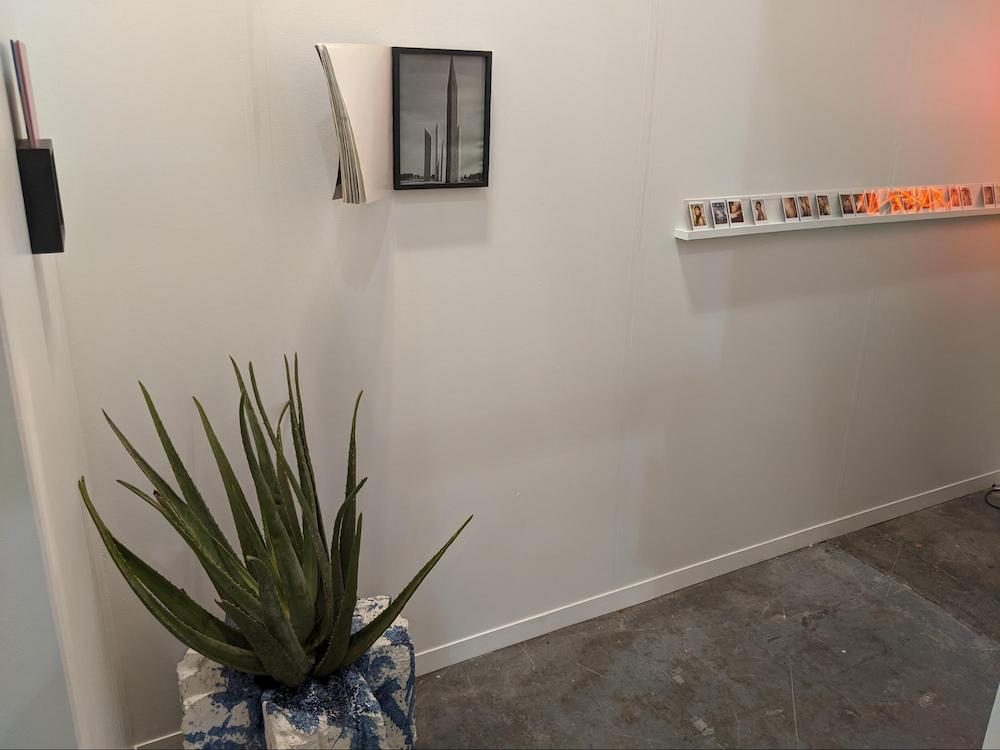



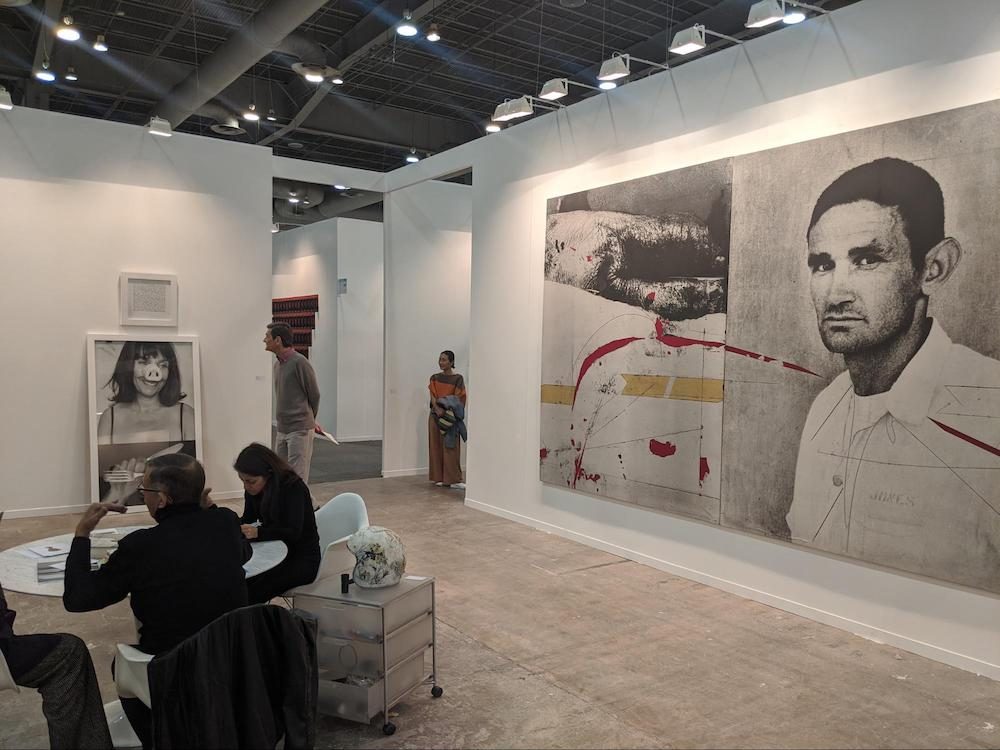

 Laure Prouvost, at carlier|gebaur of Berlin and Madrid, played with the idea of “selfie-magnet” art-fair art to great effect. These are iPhone holders with strange fake phones made from Murano glass affixed to a mirror. I love that each phone has a nearly illegible portrait rendered in blurry glass. This is one of those art objects I’d love to imagine a future archeologist finding long after any digital or printed text exists to give cultural context.
Laure Prouvost, at carlier|gebaur of Berlin and Madrid, played with the idea of “selfie-magnet” art-fair art to great effect. These are iPhone holders with strange fake phones made from Murano glass affixed to a mirror. I love that each phone has a nearly illegible portrait rendered in blurry glass. This is one of those art objects I’d love to imagine a future archeologist finding long after any digital or printed text exists to give cultural context.